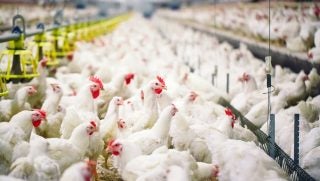Young and beginning farmers have a stake in the newest Farm Bill, which isn’t breaking news, considering they’ve had a role in past Farm Bills. However, in a time when it’s crucial to encourage more involvement in production agriculture, the 2018 bill is probably the most important bill for new farmers to date. Many opportunities, or a potential lack thereof, can be created, or destroyed, simply by the programs implemented in the next Farm Bill. The future of farming is strongly influenced by the policies set forth in this bill.
The bill language can be overwhelming, especially if you haven’t kept up with all the changes, or are beginning in agriculture yourself. For a basic overview of certain programs on the bill, read “Here’s what young and beginning farmers need to know about the Farm Bill” before you proceed with this update. While the newest bill notoriously has been said to have no access to “new money,” the House Agriculture Committee has promised to strengthen the programs currently in place and has established a few new initiatives.
Commission on Farm Transitions — Needs for 2050
This is a new effort to develop and change policy that can maintain our safe and abundant food supply source. According to the American Farmland Trust, this piece of legislation was created “to study issues around access to land, credit, and risk management tools, as well as to explore potential incentives to facilitate farm transfers. The legislation specifically mentions the study of potential Federal tax incentives to encourage lifetime transfers.”
Whole Farm Revenue Protection
This program aides farmers who run diversified, small, and even organic operations and don’t want to worry about relying on specific policies for their crops, or would like to use it in addition to their single crop. Previously, the discounts only lasted 5 years, but with the 2018 bill, these will be extended to 10. This isn’t specific to beginning and young farmers, but certainly can be used by the group and shows the importance of strong crop insurance during times of bad prices or yields. The new bill also proposes to maintain other crop insurance programs at a 5- year discount.
BFRDP
The USDA’s Beginning Farmers and Ranchers Development Program helps to fund training, outreach, and education to beginning farmers. This will be reauthorized under the new bill. If the bill should not pass by September 30, this program could potentially be eliminated. If the bill passes, funding will be maintained at $20 million per year and would make important improvements to the program.
CRP-TIP
The Conservation Reserve Program-Transition Incentive Program “encourages landowners to sell or lease long-term to beginning or socially-disadvantaged farmers and ranchers willing to implement sustainable practices or transition to organic production by providing two years of additional payments for expiring CRP-enrolled land,” according to National Sustainable Agriculture Coalition. The CRP takes highly erodible, or environmentally sensitive farmland and pays farmers for taking it out of production for a predetermined period of time of between 10 to 15 years. On the new bill, this program would be maintained. It would also aide young and beginning farmers during the transition process when land comes back into production. Programs such as these are crucial in accessing one of the most difficult resources for new farmers to acquire: land.
Under the CRP, the bill also “continues the managed haying and grazing of CRP lands which waives the 25 percent payment reduction for beginning farmers,” as the House AG Committee states on the Beginning Farmer and Rancher 2018 Farm Bill summary. The USDA’s “haying and grazing of CRP acreage is authorized under certain conditions to improve the quality and performance of the CRP cover or to provide emergency relief to livestock producers due to certain natural disasters. There are two types of haying and grazing authorization: managed and emergency.”
These are only a few programs implemented on the House AG Committee draft Farm Bill. For a full list of proposed programs and changes, read the Beginning Farmer and Rancher summary. Many of the young and beginning farmer programs are reliant on the success of other programs, as they intertwine with various other policies. With the struggle of entering into production agriculture, these programs need not only be strong and continually funded, but improved as well, to protect the future of farming and incentivize enrollment.
There are concerns to certain aspects of the proposed Farm Bill, particularly from the National Young Farmers Coalition. Young and beginning farmers and ranchers tend to start small and capitalize on the local food industry; selling their products at local markets, in CSA programs, and local restaurants. Due to this trend, the NYFC believes that local and organic initiatives will struggle under the new bill. “Mandatory funding for the National Organic Certification Cost Share Program (NOCCSP), an effective program to help young farmers offset the cost of certification, is eliminated. Mandatory funding for Value-Added Producer Grants (VAPG), which help young farmers diversify their revenue streams and grow their businesses to meet local demand, is eliminated. Mandatory funding for the Farmers Market and Local Food Promotion Program (FMLFPP), which builds out local direct-to-consumer markets and has created opportunity for young farmers across the country is eliminated.”
Regardless of the outcome of the bill, strong policies for young and beginning farmers will always be needed, and the future of farming relies heavily on the policies voted on by the House and Senate. For more resources on the bill and to read the full text, visit agriculture.house.gov.
Markie Hageman is a senior, majoring in agribusiness, at Fort Hays State University. She is actively involved in her state Cattlemen’s Association, Young Farmers chapter, and National Cattlemen’s Beef Association. Follow her seriesexploring various parts of the next Farm Bill.



